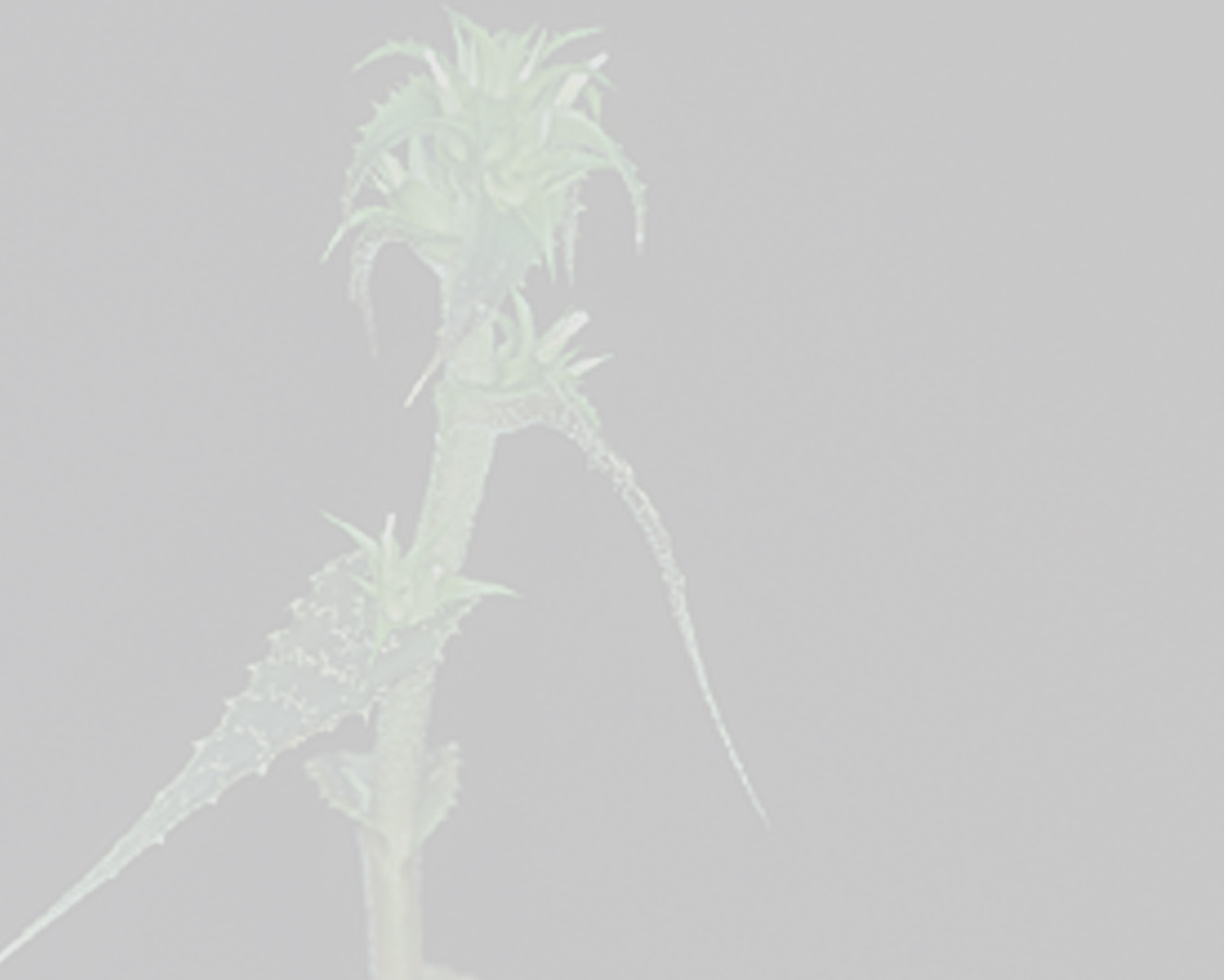


plant saxiculous, stemless, propagating by ca 20 cm long slender rhizomes. leaves 30–50 in number, spreading-recurved at anthesis, coriaceous, forming a dense rosette; sheath small but distinct, subtrapeziform, ca 1.0 × 1.3 cm, glabrescent toward the base, margins densely spinulose near the apex; blade sublinear, attenuate, long caudate, 12–38 × 0.4–0.7 cm at the base, slightly canaliculate toward the apex, opaque, densely white lepidote on both sides and toward the base, subdensely to sparsely white lepidote toward the apex, abaxially nerved, green before anthesis, at anthesis orange-red near the base forming an outer ring around the inflorescence, at the base yellowish-green and forming a contrasting inner ring around the inflorescence, margins densely to subdensely spinulose, spines subtriangular-uncinate, 0.5–1.7 mm long, 2–8 mm apart, yellowish, the basal ones sometimes retrorse, the upper ones subspreading to antrorse. inflorescence sessile, once-branched in its outer portion, simple in its inner portion, subcorymbose, densely many-flowered, 2.0–2.5 cm in diameter; primary bracts the outer ones subfoliaceous and resembling the inner leaves, but shorter, yellowish-green toward the base and orange-red near the very base, forming at anthesis a orange-red outer ring around the inflorescence, the inner primary bracts narrowly triangular, 20–25 × 5–6 mm (at the base), exceeding the fascicles, suberect, yellowish-green, densely spinulose with prevailingly retrorse-uncinate spines; fascicles inconspicuous, complanate, shortly stipitate, 18–19 × 10 mm (excluding the petals), ca 2-flowered; floral bracts triangular, green toward the apex, hyaline near the base, without any glandular trichomes, acuminate, those in the fascicles distinctly carinate, entire, shorter than the sepals, glabrous or nearly so, ca 15 × 6 mm, those in the central part of the inflorescence ecarinate, 20–23 × 5–13 mm, densely to subdensely white lepidote toward the apex, margins minutely and densely spinulose toward the apex, equaling to exceeding the sepals, erect or nearly so. flowers ca 26 mm long (including the petals), sessile, densely arranged, odorless; sepals subsymmetrical, narrowly lanceolate, acuminate, ca 14 × 4 mm, free, entire, green, glabrous, the adaxial ones alate-carinate, the abaxial one ecarinate; petals narrowly spatulate, apex obtuse, 20–21 × 5 mm, free, white, apical margins inconspicuously and irregularly crenulate, at anthesis erect except for the suberect to nearly spreading distal portion, bearing 2 shortly laminate-lacerate, cupulate appendages ca 7 mm above the base, as well as 2 conspicuous longitudinal callosities nearly equaling the anthers. stamens: filament terete, white, ca 11 mm long, the antepetalous ones adnate to the petals for ca 7 mm, the antesepalous ones free; anther sagittate, ca 3 mm long, base obtuse, apex apiculate, dorsifixed at 1/3 of its length above the base; pollen sulcate, exine microreticulate with partially incomplete reticulum. pistil: stigma simple, erect, ca 1 mm long, blades erect, margins crenulate; ovary ca 5 mm long, ca 5 mm in diameter at the apex, trigonous, white, glabrous; epigynous tube inconspicuous, ca 0.5 mm long; placentation apical; ovules obtuse. fruits unknown.Edited from ( 4-22-2014): Leme & Kollmann 2011. (protologue) New species and a new combination of Brazilian Bromeliaceae. .